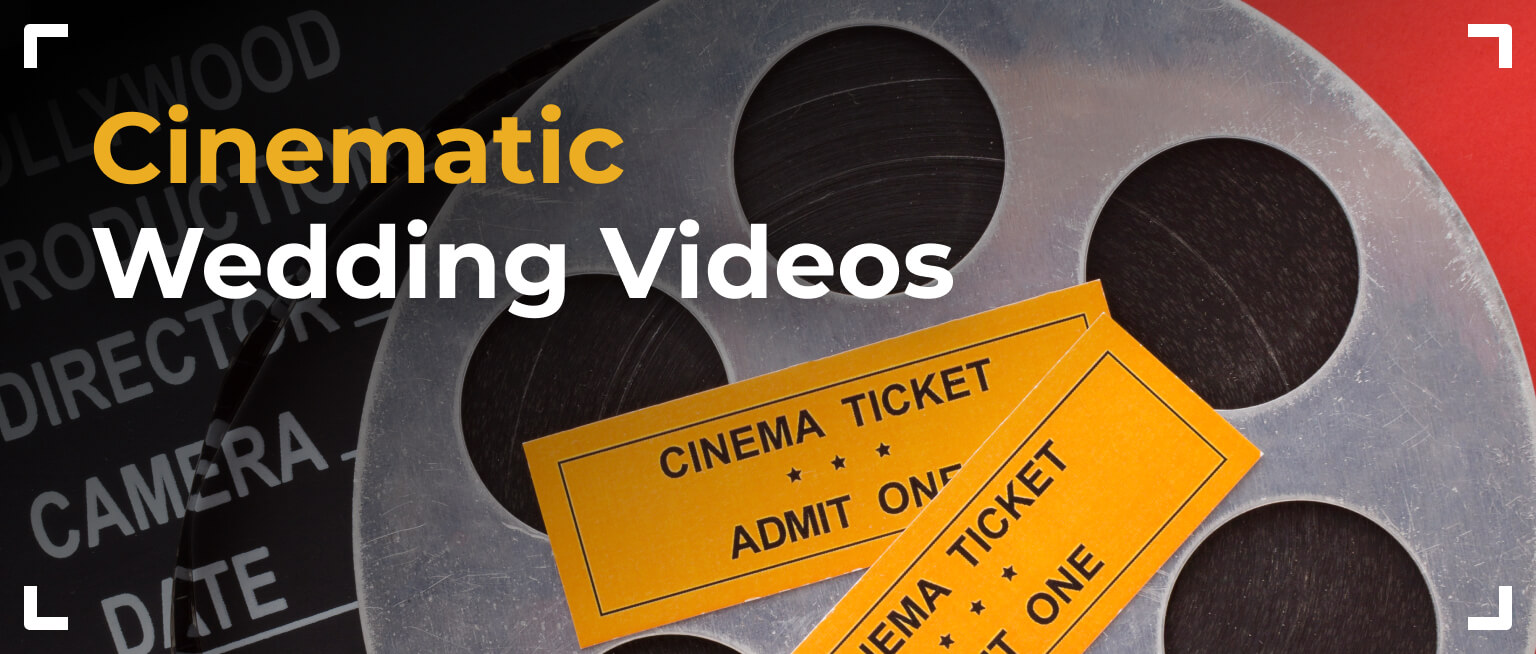Poorly chosen footage, fuzzy editing, inconsistencies in color or white-and-black balance… You will definitely notice if the editing is executed poorly. However, when a film is crafted exceptionally well, you will truly capture its overall vibe and mood, making it less likely for you to focus on minor flaws, even if they happen to exist. To ensure our films strive for this level of quality, we strictly adhere to specific editing principles within our team.
Today, we would like to share our rules and techniques with you and provide a glimpse behind the scenes of our work.
Techniques we use in editing wedding films
Since wedding films are a part of the world of videography, it’s natural that they adhere to the same editing rules as Hollywood movies and other spheres like advertising, YouTube content, and so forth. In fact, a majority of wedding films we receive for post-production are closely aligned in style with traditional cinema. Hence, a significant portion of the editing techniques we employ is borrowed straight from the film industry. So, what specific editing rules do we apply when crafting wedding films?
1. Sequence of shots
It’s important to maintain a specific order when changing shots, starting with extreme-long shots and gradually transitioning to close-up ones.
2. Over-the-shoulder shot
An “over-the-shoulder shot” captures the interaction between two subjects from the perspective of one character, always from the same side of their interaction line. This technique is commonly used during letter reading or the couple’s first meeting.
3. Match cut by light
Consistency in lighting is crucial during the editing process. Adjacent shots should not have significant variations in tone and lighting style. For example, if we have footage of the groom in a dimly lit room and the bride in a well-lit setting, we cannot smoothly transition from the groom’s footage to the bride’s. In such cases, we can opt for a slightly less brightly lit shot of details or incorporate a speech from the reception as a transitional element, such scenes generally have less vibrant visuals.
4. The Kuleshov effect
The Kuleshov effect is a film editing demonstrated by Russian filmmaker Lev Kuleshov in the 1910s and 1920s. It is a mental phenomenon by which viewers derive more meaning from the interaction of two sequential shots than from a single shot in isolation. Kuleshov edited a short film in which a shot of the expressionless face of Tsarist matinee idol Ivan Mosjoukine was alternated with various other shots (a bowl of soup, a girl in a coffin, a woman on a divan). The film was shown to an audience who believed that the expression on Mosjoukine’s face was different each time he appeared, depending on whether he was looking at the bowl of soup, the girl in the coffin, or the woman on the divan, showing an expression of hunger, grief, or desire, respectively.
This effect is also applied at weddings. For instance, during the ceremony, when the groom awaits the bride, we first see his calmly waiting, then we see the bride, and finally, we witness the groom’s reaction.
5. Movement match cut
It is forbidden to change the direction of an object’s motion from right to left in relation to a vertical line at the cut between shots. In other words, if a couple is moving from left to right in one shot, they cannot be shown moving from right to left in the next one. The example below demonstrates the use of editing based on the movement match cut perfectly.
6. Match cut by motion phase
Action serves as a vital foundation for editing transitions. The key rule of editing is to cut during a moment of action. The example below illustrates this concept.
7. Matched cut
In smooth editing, it’s crucial to limit the horizontal shift of the focal point when transitioning between shots to no more than one-third of the screen width. If a person is noticeably positioned to one side of the shot in a wide shot and then shifts to the opposite side in a medium shot, viewers may momentarily lose sight of the subject during the transition due to the sudden change in focus. To avoid this, it’s essential to adhere to another rule during filming and editing: keep the horizontal shift of the focal point within one-third of the screen width when moving from one shot to another.
8. Match cut to color
It’s important to avoid drastic differences in color between neighboring shots. If new colors are introduced in the following shot, they should occupy no more than one-third of the whole area. The viewer’s eye seeks something to latch onto in terms of the color scheme, something to anchor to in the initial shot. This ensures that the sudden appearance of a completely different, prominent color background or spot in the subsequent shot doesn’t catch the viewer off guard.
9. Rule of thirds
The definition is – Mentally divide your image horizontally and vertically into thirds and position the most important parts of your shot along those imaginary lines.
We frequently employ this technique to enhance the visual appeal of the composition. If some shots are not captured following the rule of thirds, we make a slight crop to align neighboring shots with a consistent composition. This ensures a cohesive visual experience.
10. Сutaway
A cutaway shot is a supplementary shot that “cuts away” from the main action to indicate something else in the space, such as an object or location.
These can include a variety of b-roll shots, capturing the intricate details of the wedding venue, elements of the wedding, and overall glimpses of the location itself.
11. Parallel editing
We use this approach to showcase simultaneous or contrasting events. This technique involves frequent transitions between two scenes, creating a sense of continuous “jumping.” Parallel editing is frequently employed in weddings, such as during preparations, where a speaker discusses the couple while the editor skillfully switches between shots of the preparations, the groom, and the bride.
Effects we use in editing wedding films
Example of utilizing video editing rule. Let’s also highlight some effects that we incorporate in the editing of wedding films.
Jump Cut
This technique combines two similar video segments. It’s one of the most beloved effects in wedding films and is fairly simple to execute. During editing, we abruptly interrupt one action within the shot and transition to another action involving the same subject, or we showcase an entirely different action with other subjects. However, it’s important to avoid abrupt transitions to different locations or subjects, as it can make it difficult for viewers to follow the unfolding events.
Speed Ramp
Speed ramping is when you gradually change the speed of a video clip. In wedding films, speed ramping is employed within a long shot to swiftly move the camera closer to the subject without relying on a jump cut. For instance, at the start of the shot, the bride might be looking downwards, and after the speed ramp, she is facing the camera.
L-cut
This effect is commonly used during clip editing, such as during the bride’s preparations, where the groom’s speech starts playing, and a few shots later, we show the groom. It is also sometimes used when the crowd’s cheering from the second shot overlaps with the end of the first shot.
This technique facilitates a smooth transition to the next scene, avoiding abrupt visual cuts that may disrupt the viewer’s experience. It is widely popular in the film industry and was frequently employed in the TV show Stranger Things as a precursor to transitioning into a new scene.
Split Screen
The effect is used to showcase different elements within the shot simultaneously. These can include both details (b-roll footage) and the positioning of different individuals, such as the groom and the bride.
From the popular jump cuts and speed ramping to the seamless L-cuts and parallel editing, today we uncovered the secrets behind these techniques and their impact on storytelling. If you’re looking for professional wedding video editing services which include all of this, look no further.
Our experienced team is ready to transform your raw footage into a beautifully crafted film that captures the essence of any love story. Contact us today to discuss your project and book our editing services.



